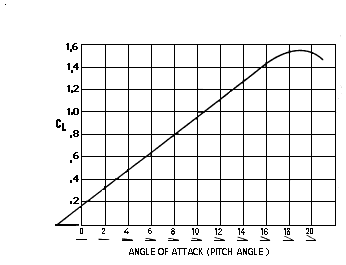MW SPEED.
Our approach to speed is nothing unique, smaller gear and more power equals more speed.
If our original Storm line is primary oriented for an average sailor who demands reliable and stable run, our Speed line is all about how far we can push our limits to achieve maximum speed. We came up with sail with CL located closer to ground (water) and lower aspect ratio due to shorter mast and structural deficiency of soft airfoil. Still loaded with power from top to bottom, our speed sail is able to go faster up and down wind, faster than traditional sail of larger size. We compare our 5.6 to racing 7.0 of well known brand. We have many YouTube videos to prove it. There is a very good explanation of why our profile works better. Lets refer to well known agency for knowledge NASA https://www.grc.nasa.gov/WWW/K-12/WindTunnel/Activities/lift_formula.html
Diagram on NASA site shows that maximum lift can be achieved at 18-19 degrees AOA. Absolutely agree as we simulate every 5-10 degrees developing our sails. We also did extensive comparison between MW sails and traditional, thin profile .

Our CFD study clearly indicates that traditional sail with medium camber start loosing lift at the angle of 25 degrees. At 20 degrees where highest CL, thin profile fails really bad, this is where “overpowering” takes place.

To postpone overpowering, racers outfit their boom with out hauling gizmos so they can change depth of camber while sailing. With reduction of camber depth lift reduces as well. Still this technique works only to some degree. Other well known technique to postpone overpower is to increase leach twist with harder downhaul. But increasing twist it not only reduces profile depth, it also dramatically reduces lifting surface. So how fast actually we can go using different airfoils. Of course, speed also largely depends on state of the water and fin load ability. Lets assume that fin load and water state is constant so we can concentrate only on "engine” performance. Also, angle between board direction and sail is 22 degrees. As for traditional sail it is well established that in order to maintain maximum lift, AOA should not exceed less than 25 degrees. So all together 22 board angle and 25 angle of attack, 47 degrees apparent wind. This is very simple. If you sail 90 degrees true wind using traditional sail, you need 29KT true wind speed in order to reach 27KT ground speed. Here is apparent wind calculator: http://l-36.com/polar_calculate.php?flag=30&flagw=10&tail=15&wdir=90&wd=T&wspeed=29&ws=T&bs=27
As for our Speed wing where it's best CL of 19 degree AOA apparent wind angle could be 42 degrees. It means that in same conditions 90 degrees true wind @ 29 KT, wing would reach its ground speed of 32 KT. 5KT faster than regular sail at its best.


















